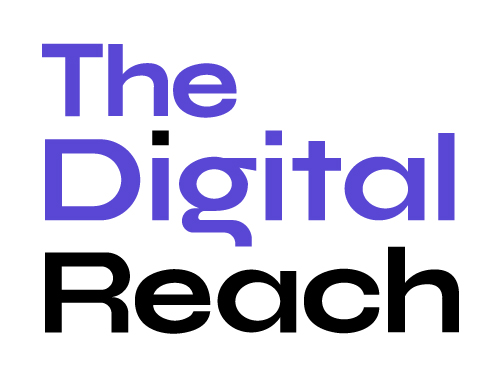In today’s competitive era, B2B businesses need to stand apart from their competition by focusing on the right content marketing strategy that can directly resonate with their targeted audiences. It is important to focus on the customers’ journey while creating the whole content marketing strategy to help potential customers connect with your content and derive value to decide to buy your services. Therefore, having a detailed content strategy catering to the different stages of buyers, like awareness, interest and consideration, decision, and retention. At each stage, the buyer’s requirements are different, and there is a need to have a content strategy and plan catering to each specific stage of B2B customers. And that’s where the customer personas come in, enabling the creation of content strategies that aim to deliver value to the buyer persona at each stage. Therefore, there are certain B2B content marketing best practices that businesses need to take care of, and this blog delves into all those best practices to empower businesses to make accurate content strategies for their B2B customers.
Six B2B Content Marketing Best Practices Your Business Needs
The ultimate goal of every business is to convey its message to its target audience simply and effectively, which helps build brand awareness and authority. Content marketing strategy empowers businesses to achieve this objective with a laser-focused approach to all stages of a buyer’s journey, slowly but surely nudging him toward the sales process. Therefore, having a clear approach to content marketing strategy enables businesses to gain growth by establishing good relationships with their customers by showcasing their authoritative edge through well-planned content. So, let’s have a quick rundown on the best practices for building a robust content marketing strategy.
- Building Content for Different Stages of Buyer Persona: The golden rule of content marketing is to create content that resonates with the target persona effectively. It calls for having a strategic approach to all four stages of buying, like the awareness stage, which is usually called the top of the funnel (TOFU), where the target customer is made aware of their pain points, problems, and challenges. At this step, blogs, infographics, social media posts, infographics, guides, short videos, and ads. Here the key point is that the given content forms are harnessed with CTAs and valuable insights for potential customers who have identified their problems and are searching for different approaches or methods to resolve their pain points. The next stage is MoFU, where the potential customers are more informed about the problem and look for specific solutions. At this stage, the value can be provided with case studies, eBooks, whitepapers, landing pages, long videos, webinars, email nurturing, and comparisons of different products. Bofu is the stage where prospects have made up their minds for a particular solution or strategy and are looking at the list of vendors and comparing their pricing to jot down the final list to make the buying decision. At this stage, customer testimonials, free product demonstrations, checklists, offers, and discounts play a crucial role in offering a personalized solution like sales calls, emails, WhatsApp responses, or meetings to prospects and building trustworthiness.
- Documenting Content Strategy: Research done by Marketing Profs and CMI has shown that more than 60% of successful businesses have documented their content strategy, as compared to approximately more than 18% of businesses that have not yielded any success from their content marketing efforts owing to lack of documentation. With clear documentation, it becomes easier to monitor the whole strategy, content created, brand voice, messaging, business goals, and target personas and understand whether the entire team, like content writers, marketers, developers, and designers, aligns with comprehensive business goals. Moreover, when there is a documented strategy, it becomes effective for everyone to understand their roles and key responsibilities, and tracking and measuring performance makes it easy to maintain uniformity in the operations. Having the KPIs in place enables the measurement of the effectiveness of the content strategy, and if there are inconsistent results, the data-driven approach enables the marketing team to make informed decisions and make required changes in the strategy to drive desired outputs.
- Consistency is the Key to Focusing on the 3-2-1 Formula: In the current scenario of humongous digital content coming across prospects’ paths, it is important to create a differentiator with brand voice and messaging that should be delivered consistently. Leveraging different forms of content is crucial on social media platforms to build trust and authority among prospects. Furthermore, the golden rule is to follow the 3–2-1 approach, which signifies the publication of industry-related topics three times a week, two pieces of content that showcase a proud moment, and one piece of content that can be dedicated to brand promotion or selling the solutions. The addition of multimedia helps enhance the visibility of the post, particularly by using custom images and videos that boost engagement up to 5X, enhancing brand visibility to the next level. With a defined content strategy, it becomes easier to maintain consistent efforts in the given direction and track whether the company is following the 3-2-1 rule and gaining results from it. By leveraging Google Analytics metrics, marketers can monitor the performance of content and also redefine their strategy if needed.
- Creating a Mix of Topical and Evergreen Content: Content is king, and it will always be for businesses to reach their target audiences. But, to achieve the desired goal, it is important to create a content marketing strategy that focuses on building a mix of content that comprises topical content pieces along with evergreen content. The topical content needs revision every year based on market trends and user requirements, and the evergreen content always stays meaningful by delivering value to prospects. Additionally, it is important to promote the content on the right channels to gain impactful results. The common examples of building a combination of evergreen content in the blogs with the addition of a topical hook that can generate interest from the targeted audience also include an interesting infographic that depicts the trending information on the given topic, showcasing the key takeaways that are highly evergreen in value. Similarly, there can be social media posts, videos, and webinars on current topics that bring out the relevance of facts and historical contexts to explain the entire information effectively.
Conclusion
To sum up, content marketing opens a plethora of opportunities for B2B businesses to get heard and seen with adequate brand building and the establishment of trust and authority. Therefore, by following the above-mentioned tactics, the B2B content marketing strategy plays a critical role in optimizing the different types of content pieces, including thought-leadership that help businesses attract, engage, and retain potential customers and serve their business goals proficiently.
I am a dedicated technology enthusiast and seasoned software developer with a deep passion for creating innovative solutions.





